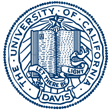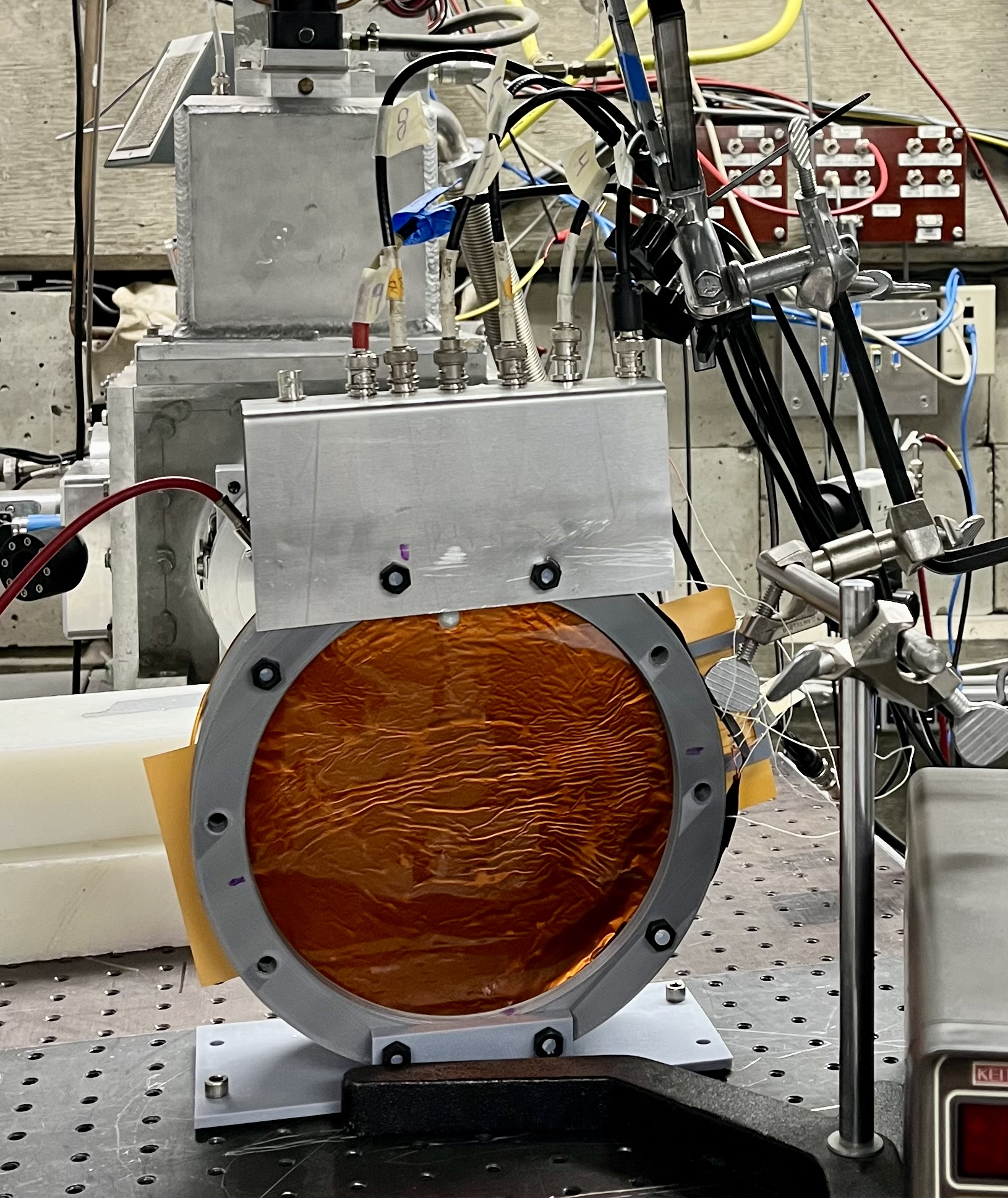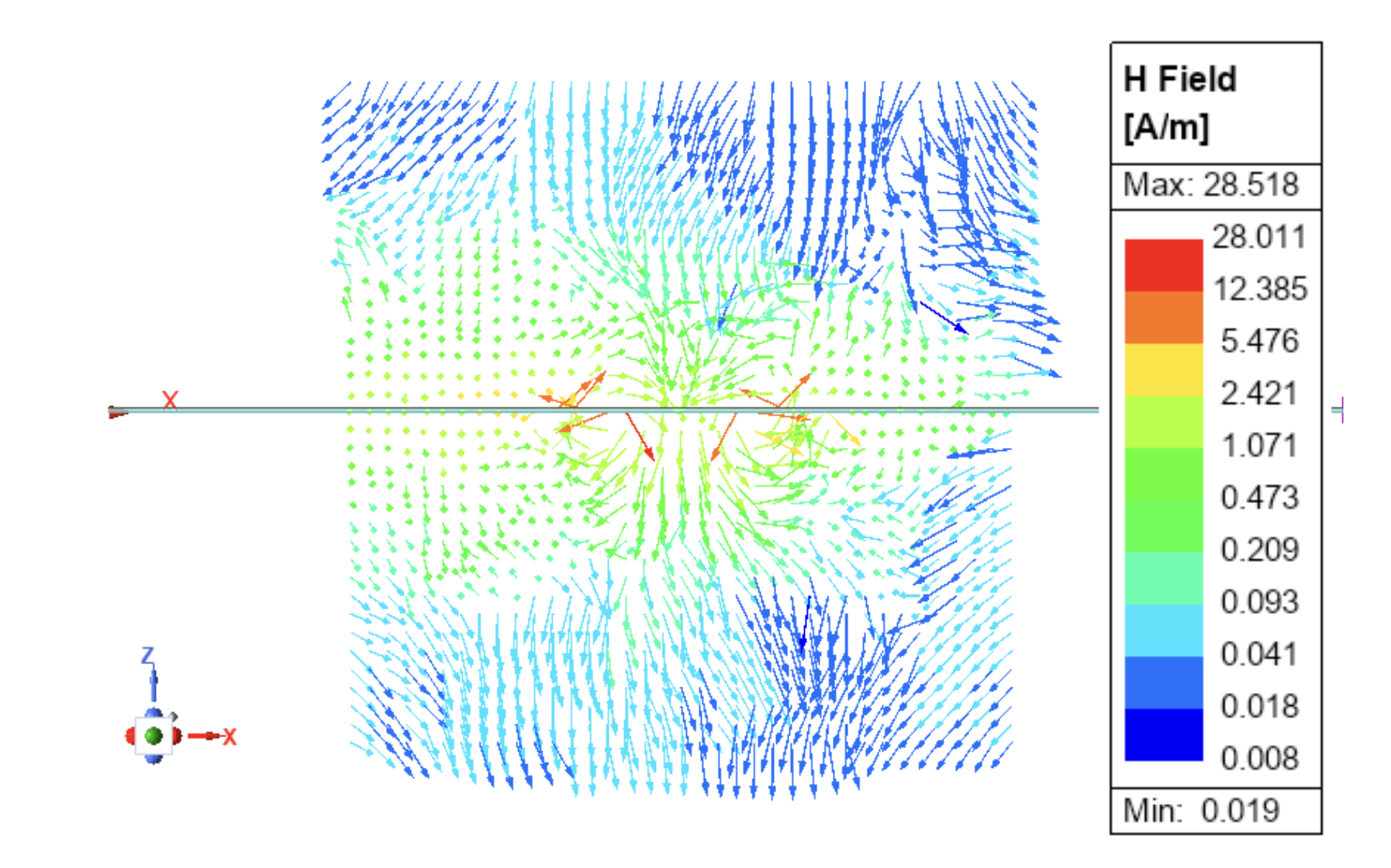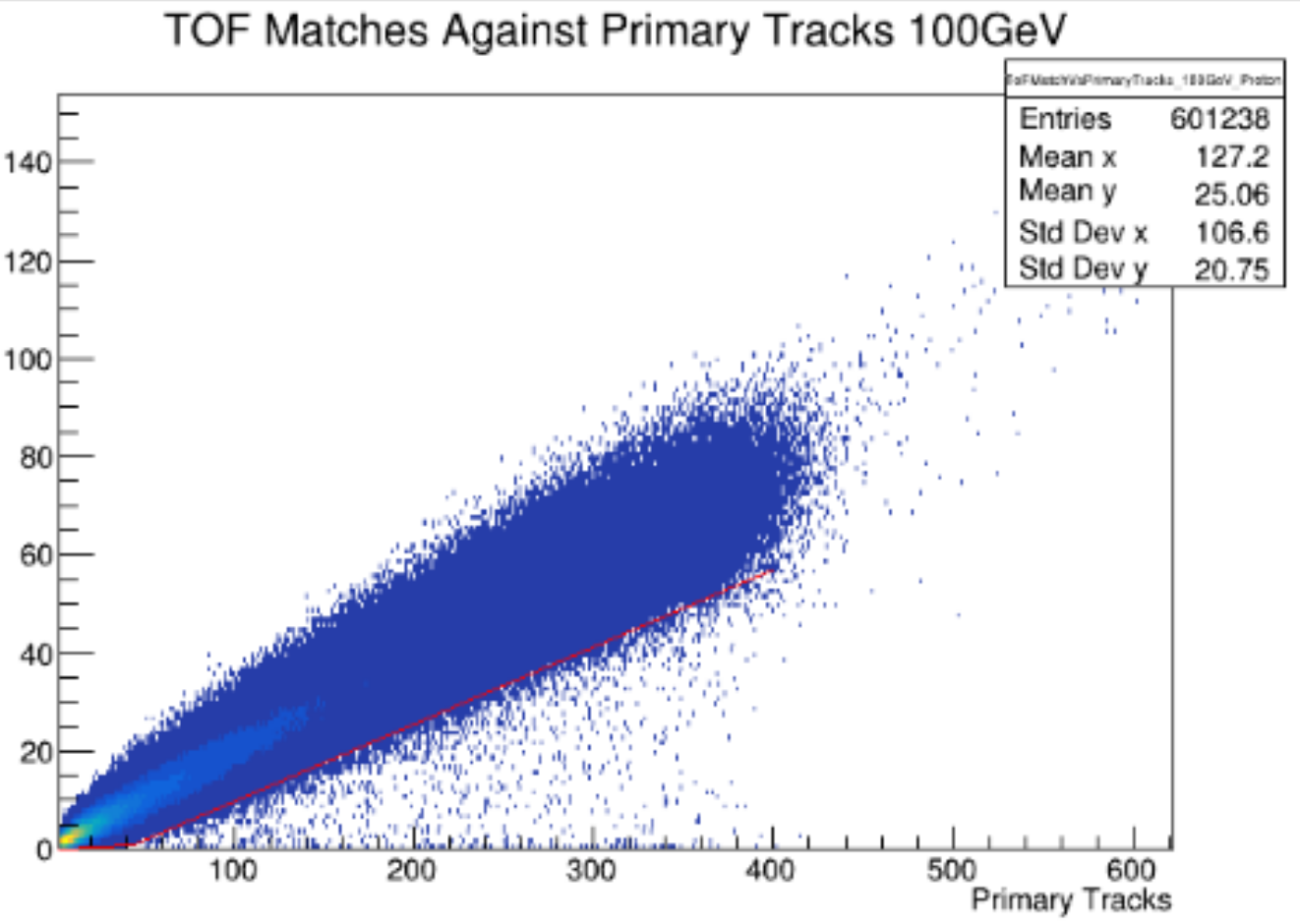
This REU program was funded through NSF PHY-2150515.

Ion chamber Evelyn Hamera built for measuring radiation profile of cyclotron beam.
Students' names link to their final papers. Advisors' names link to the research group web pages.
Condensed Matter Experiment
Luc Nguyen (UC Berkeley;
advisor Dong Yu)
explored growth conditions for Bi2Te3 nanowires. The material is
a topological insulator, which conducts charge on its surface even though
the bulk of the material is electrically insulating. Beyond the interest
in exploring this unusual behavior, there is potential for applications
in converting light to electrical current. Luc tested different
substrate positions, temperatures, growth times, and argon flow rates.
He then used scanning photocurrent microscopy to measure how far the charges excited
by photons could travel in each sample, aiming for as long a distance
as possible.
Johanna Hayes (Middlebury College; advisor Shirley Chiang) worked on a LEEM (low energy electron microscope) system. The ultimate goal was to make an atomically smooth surface of germanium (100) and to explore the phase diagram of lead atoms deposited on the surface. Other surfaces of the germanium crystal could be cleaned by blasting the surface with inert argon atoms, then heating the crystal so that the germanium atoms could rearrange themselves and smooth out any pits or ridges created in the previous step. That method had not worked for the (100) surface, although possibly the parameters can be tuned so that it will. Johanna redesigned and adjusted parts of the apparatus, often to prevent or remove unwanted electrical shorts, and ran a trial cleaning of two samples.
Neutron stars rotate rapidly,with the unusual property that the rotation rate occasionally increases abruptly for no obvious reason. The accepted explanation relates to the neutron superfluid in the interior of the star. Superfluid helium experiments on Earth can observe a similar effect, with the advantage of being able to control parameters of the system. Sebastian Serrato (Broward College; advisor Rena Zieve) worked on improving data acquisition and analysis in a rotating superfluid helium setup. He worked on correcting systematic errors from the previous data acqusition algorithm and began tests on saving more complete data sets.
Nitrogen-vacancy (NV) centers in diamond have potential for quantum information and other applications. They have spin states that can be manipulated, in part through their interaction with the orbital states of electrons. Sofia Davvetas (Muhlenberg College; advisor Nicholas Curro) simulated antenna geometries to discover how best to transmit pulses to NV centers at the frequencies desired for magnetic resonance measurements; one of her field simulations appears below.

Astrophysics
Gena Levin (Smith College; advisor Tucker Jones) investigated the massive black holes at the centers of galaxies. She looked at how the holes evolve and how that evolution depends on the surrounding galaxies. From a set of 42 galaxies, she looked at emission lines to see whether ionization came from star formation (a part of galaxy evolution) or from the action of a black hole. The few cases where black hole activity seemed responsible all came from the heaviest galaxies studied, which also tend to have the largest black holes. This leaves open the question of how the black holes begin their growth in smaller galaxies.
Rori Kang (Harvey Mudd College; advisor Andrew Wetzel) looked at how stars change positions within a galaxy. She focused on cold torquing, a mechanism based on rotational resonances that can alter the radius of a star's revolution within a galaxy without leaving signatures that can be observed at a later time. Since observations of real galaxies cannot identify stars influenced by cold torquing, Rori used data from the Feedback in Realistic Environments (FIRE) cosmological simulations. In simulated galaxies she could track stars over time to see how strongly they were affected by cold torquing.
Precision Measurement
Jared Sofair and Mennatalla Ellaqany (Lafayette College) worked with Nancy Aggarwal on a search for a dark matter candidate, the axion. The experiment involves measurements of miniscule magnetic fields, so a first step is to characterize and reduce the magnetic background. Measuring an available magnetically shielded room showed that the shielding was not nearly as good as it should be, possibly because of steel used for shielding shares grounding with the room's electrical sockets. This needs to be corrected before the experiment can go forward.

To get low magnetic background, even paints that might be used had to be tested. Paint B proved to have too high a magnetic signal.
Mathematical and Particle Theory
Classically, electrons are often treated as point particles, with finite mass but zero radius. For many purposes this works; the size of an electron is often much smaller than all other lengths in a calculation, so its exact radius never factors in. One case where there is an issue is when an accelerating electron radiates electromagnetic waves. With a classical value of about 1 femtometer for the electron radius, the electron should accelerate to near the speed of light almost instantaneously, orders of magnitude faster than today's fastest lasers. Shaheed Perez (Florida State University; advisor Markus Luty) explored a quantum treatment of radiation. As of the end of the summer he had not found possible non-zero but finite terms that could resolve the contradiction between the classical prediction and our everyday experience, but he planned to continue the work.
Functions in a region with a boundary can, under some circumstances, be completely defined by their values on the boundary. A similar idea can apply to theories of gravity, which can be related to lower-dimensional theories without gravity. Anish Suresh (Rutgers University; advisor Mukund Rangamani) worked on using this framework to find quasinormal modes (oscillations that decay over time) of black holes in different spacetime metrics.
Experimental Particle and Nuclear Physics
Elizabeth Veraa (Texas Tech University); advisors Daniel Cebra and Manuel Calderon de la Barca Sanchez looked at a particular detail of lead-lead collisions from the Large Hadron Collider (LHC). Of course lead is not a hadron, but the LHC spends one month each year colliding heavy ions rather than hadrons. The lead ions cannot be accelerated to speeds as high as those of the protons and antiprotons used for the rest of the year, but their much larger mass means that the collisions involve more total energy and can blast quarks free from nuclei. The result is a Quark Gluon Plasma, a state that also occurred in the very hot early universe just after the Big Bang. Elizabeth looked at whether the mass distribution of Z0 bosons correlated to the electromagnetic field during the collision. She found some correlation, which did not quantitatively match expectations but suggests that the idea is worth pursing further.

Points outside the main region tend to come from errors or pileups of one type or another.
The Relativistic Heavy Ion Collider at Brookhaven National Laboratory also probes the quark-gluon plasma. MacChesney Semmelroth (University of Connecticut); advisors Daniel Cebra and Manuel Calderon de la Barca Sanchez simulated results from collisions of gold nuclei. He focused on "pileup" events where two collisions occur at almost exactly the same time, leading the detector to consider them as a single (possibly strange) event. MacChesney used the experimental distribution of events to calculate the odds of such pileups and show how they would affect the overall distribution. Happily, he found that their contribution was small, at least for the present data.
The UC Davis campus has a cyclotron which is used for research and also many practical purposes, from radiating eye cancers to authenticating old manuscripts. For some of these applications, notably the eye treatment, knowing the exact radiation dose at different spots of the target is crucial. Evelyn Hamera (Sierra College; advisor Eric Prebys ) built an ion chamber to measure the beam profile directly. Her work included simulations to find the best design, construction of the chamber, and tests of its performance.